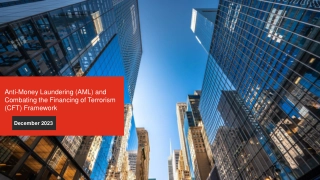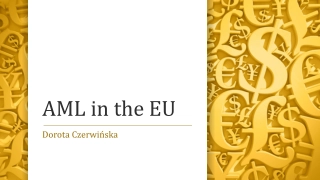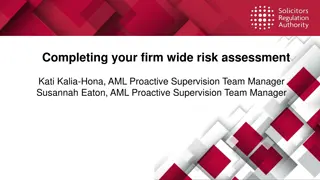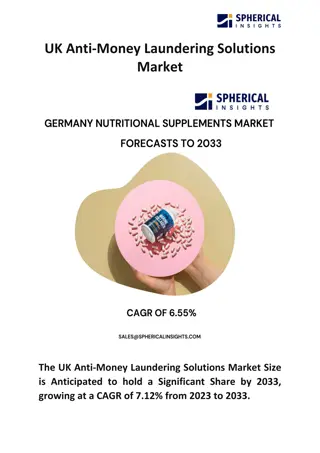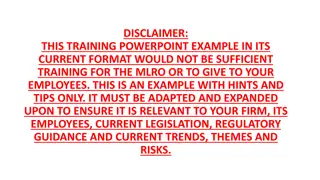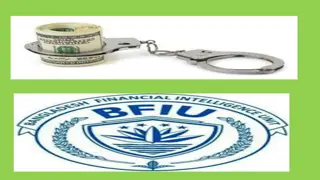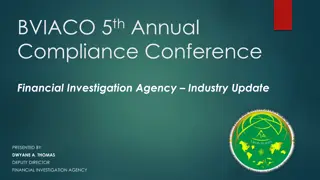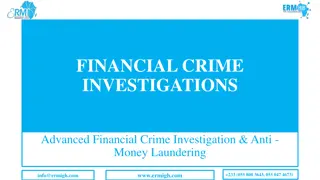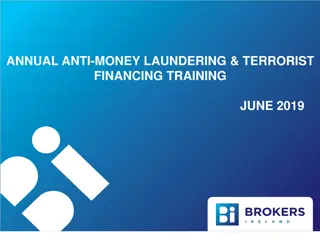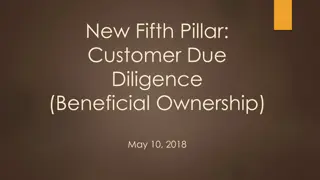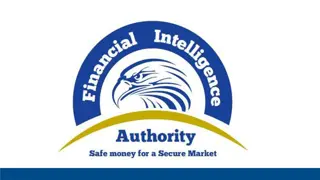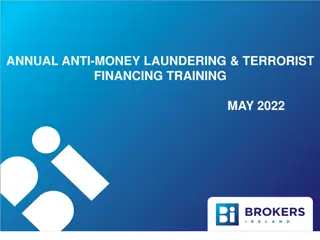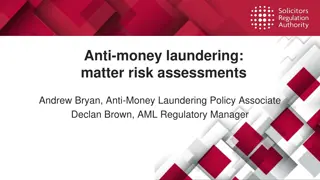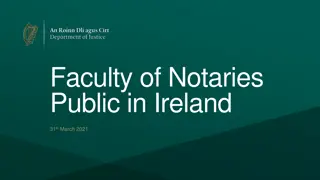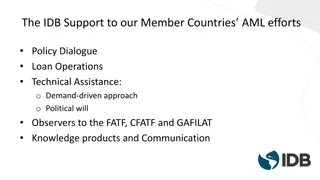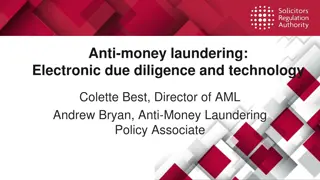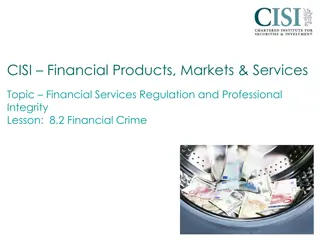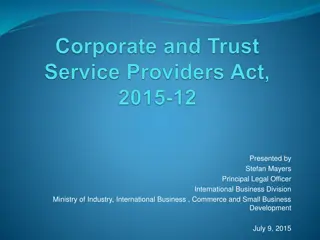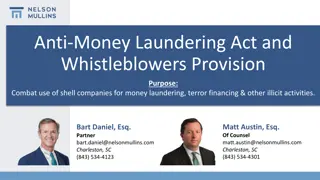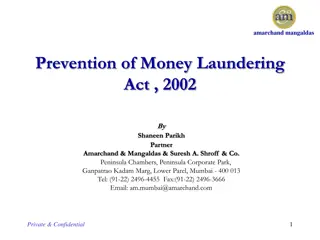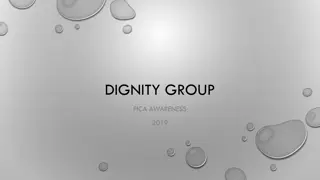Practical Tips for Managing Anti-Money Laundering Risks
Learn practical tips for managing Anti-Money Laundering (AML) risks, including the importance of getting it right, AML supervision techniques, basics to adhere to, and scenarios to consider when dealing with client funds. Stay informed about regulations and conduct firm-wide risk assessments to combat money laundering effectively.
Download Presentation

Please find below an Image/Link to download the presentation.
The content on the website is provided AS IS for your information and personal use only. It may not be sold, licensed, or shared on other websites without obtaining consent from the author. Download presentation by click this link. If you encounter any issues during the download, it is possible that the publisher has removed the file from their server.
E N D
Presentation Transcript
Anti-money laundering - practical tips for managing AML risks Colette Best Director of Anti-money Laundering, SRA
Why is getting it right important? Stopping crime Reputational risk to your firm and sector Increasing checks Our first priority is to help firms get it right, but taking action in serious cases Lots of resources available to help
AML supervision Firm wide risk assessment reviews AML visits assessing adequacy and effectiveness Thematic tax advisers review Desk based reviews of PCPs
What are the basics to get right? 2017 Money Laundering Regulations Are you in scope? Nominate a Money Laundering Compliance Officer (MLCO) and Reporting Officer (MLRO) Get your beneficial owners, officers and managers approved with the SRA Keep up to date with changing regulations
Scenario Your client is purchasing a residential property. They advise that the funds are coming from savings they have accrued via their salary. Q: What further steps would you take in regards to source of funds if any?
Scenario options A. Accept the client s explanation of where the funds are coming from B. Request bank statements to show funds exists C. Collect bank statements and any further information necessary to also satisfy on client s wealth
Anti-money laundering - practical tips for managing AML risks Zo Allen-Robinson AML Proactive Supervision Manager, SRA
Firm wide risk assessments A year on . Seeing a general improvement Better understanding of the purpose of a firm wide risk assessment More tailored use of templates Areas firms as still struggling with: Failing to consider all of the services they provide Transactions Delivery channels
AML visits 64% required follow up engagement, 9 firms referred for investigation Published useful guidance 74firms involved Further checks planned for the future
Areas that required improvement Audit Screening Matter risk assessments Source of funds
Audit What isn t enough No audit undertaken, or plan to undertake one where size and nature of the firm warrants an audit Audit of policies, controls and procedures but no test of their effectiveness Failing to keep written records of previous audits Failure to implement recommendations in a timely way What we are looking for Most firms to have undertaken or planning an independent audit If internal audit, auditor is sufficiently removed from the compliance function so as to be independent Audit involves file reviews for compliance with AML policy and legislation Audit produces recommendations, which are then monitored
Screening What isn t enough Screening only at appointment Not maintaining records Reliance on fee earner declarations alone MLCO unfamiliar with screening processes Firms limiting screening to conveyancing staff What we are looking for Firms are screening staff at appointment and on an ongoing basis Firms taking a risk based approach on DBS checks Relying on independent sources Adopting a holistic approach, using existing measures such as annual appraisals and checking referees
Matter risk assessments What isn t enough Not recording risk assessments Risk assessment does not account for mandatory EDD requirements Fee earners unable to access CDD and other information, making ongoing monitoring difficult if not impossible What we are looking for Matter risk assessments on each file Assessment conducted at the outset and reviewed at appropriate intervals Process is clear when a matter is high under the regulations and firm s own policy
Source of funds What isn t enough Source of funds checks routinely not completed Evidence such as bank statements not being read Assumptions about a client s source of funds and wealth based on anecdotes and perceptions rather than evidence What we are looking for Origin of funds being clearly evidenced Clear policies on when source of funds and wealth checks are required and what documentation should be obtained for individuals and companies
Help is available Risk Outlook, national and sectoral risk assessments Warning notices Thematic review findings Legal sector guidance Professional Ethics helpline and webchat sra.org.uk/staysharp
Scenario continued Your client is purchasing a residential property. They advise that the funds are coming from savings they have accrued via their salary. On obtaining bank statements you see a large payment from a third party. You ask the client about this and they advise it is a gift from their parents. Q: what further checks if any do you do?
Scenario 2 options A. Speak with the parents and accept their explanation of the source of funds B. Accept the parents explanation and obtain ID and verification C. Speak with the parents, obtain ID and verification and bank statements confirming the origin of the funds D. Speak with the parents and obtain bank statements confirming the funds








